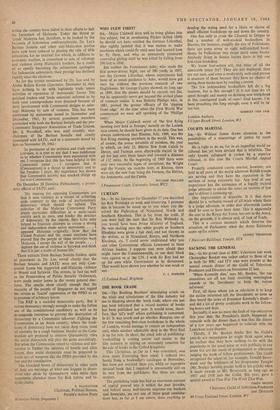VVII0 FLEW FIRST?
Sin,--Major Caldwell does well to bring gliders into this subject, but in mentioning Pitcher (killed 1899) he should not have omitted the German Lilienthal, who rightly insisted that it was useless to make machines which could fly until man had learned how to fly them, and who so extensively pioneered controlled gliding until he was killed by falling from 100 feet in 1896.
But neither the Frenchman Ader, who made the first power-driven flight, one of 300 yards, in 1897, nor the German Lilienthal, whose experiments had been of so much guidance to Ader, would have got very far without the previous research of two Englishmen. Sir George Cayley showed, so long ago as 1809, that the planes should be curved, not flat, but he apparently never got beyond the arched plane of constant radius. It was Horatio Phillips who, in 1881, proved the greater efficacy of the 'dipping front edge.' At the time when the First World War commenced we were still speaking of the 'Phillips entry.'
When Major Caldwell wrote of 'the first flying meeting ever held in Europe,' namely on the Lanark race course, he should have given us its date. One has always understood that Rheims, July, 1909, was the first flying meeting anywhere in the world. This was, of course, the annus mirahilis of aviation, the year in which, on July 25, Bleriot flew from Calais to Dover, and Farman soon afterwards stayed in the air for just over three hours and covered a distance of 112 miles. At the beginning of 1909 there were only two successful types of aeroplane, the Wright and the Voisin; six months later, at Rheims, there were six, the new four being the Farman, the Bleriot, the Antoinette, and the Curtis.


































 Previous page
Previous page